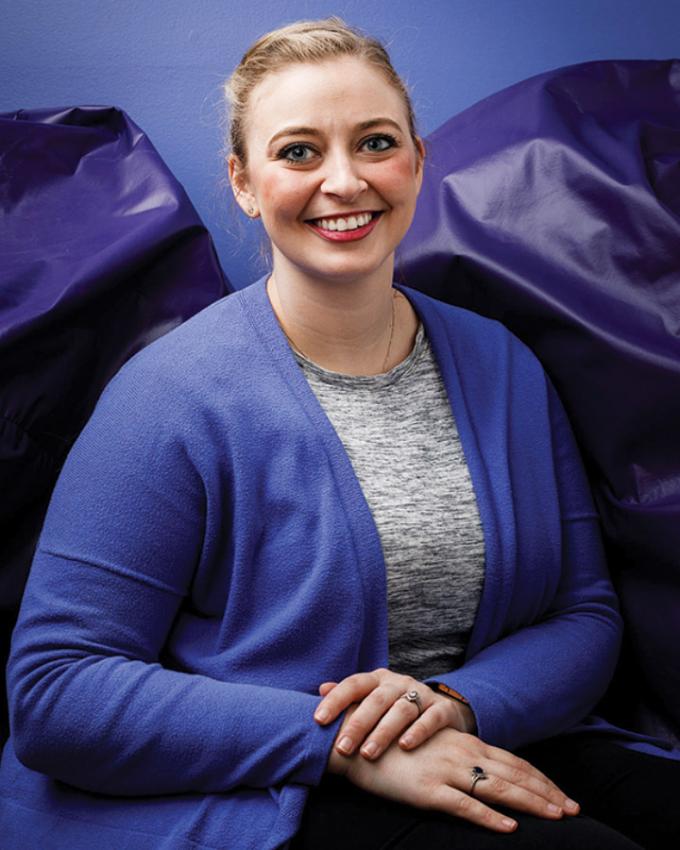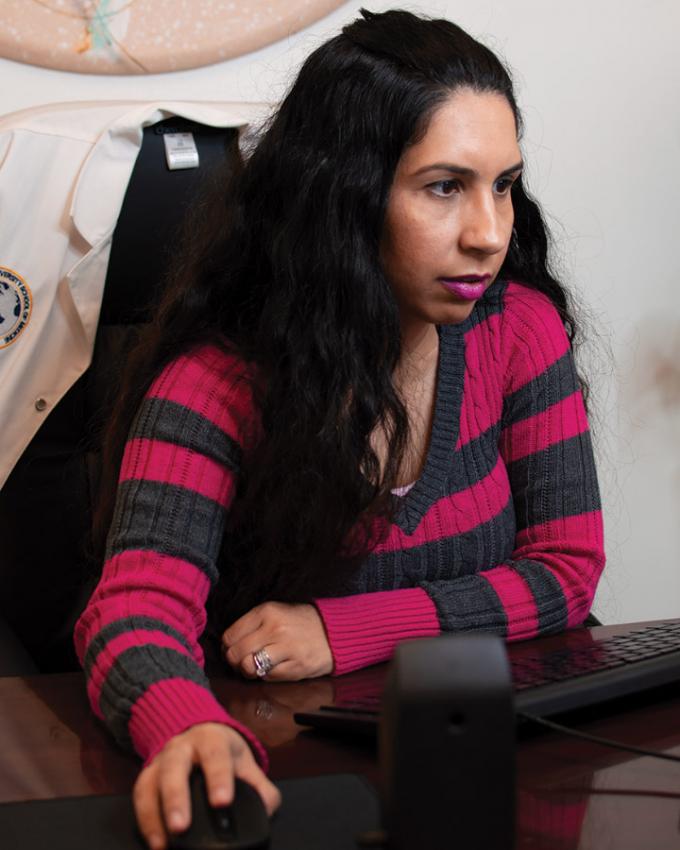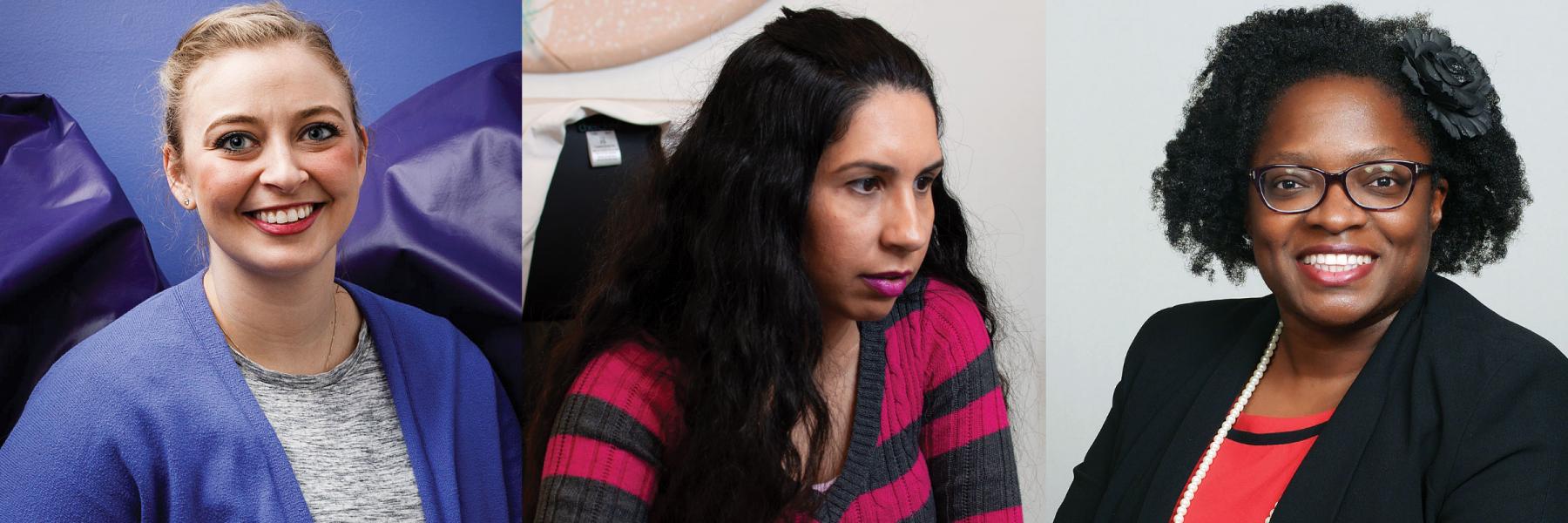When you think of edgy HIV/AIDS programs that are tapped into current culture and trends, you may tend to think first of programs in large, coastal cities such as Los Angeles, New York, San Francisco, or Washington, D.C.—perhaps even Seattle; Portland, Maine; or Boston. But innovative work in HIV prevention and treatment interventions is happening in the Midwest and the South, too.
HOTTER in Chicago
'It was magical to see them bond with each other'
Test Positive Aware Network (TPAN) is a Chicago-based AIDS service organization (ASO) that has been around since 1987 (and is the publisher of Positively Aware). TPAN used to be known as an agency that served mostly gay, white men, but as the epidemic has changed, so has the agency’s clientele. Always trying to stay one step ahead, TPAN applied for and received a sizable five-year grant from the Substance Abuse and Mental Health Services Administration (SAMHSA) for a program tailored to young, African American men who have sex with men (MSM). The program, called Healthy Outcomes Through Treatment Empowerment and Recovery (HOTTER), was so successful that the funding was extended for an additional year, and HOTTER was asked to share their best practices and lessons learned at the national SAMHSA conference.
Instead of using the typical approach to HIV prevention, TPAN chose to be strategic. They spoke with community members, listened to their suggestions and incorporated their ideas into the grant proposal. “We put a lot of thought into this grant proposal,” says Julie Supple, TPAN’s Director of Client Services. “We looked at what worked and what didn’t. We had to be different.” The staff also thought very carefully about exactly when to introduce HIV/AIDS into the curriculum, because we didn’t want to make it all about HIV, especially when we work at an ASO.” They decided on a holistic approach to HIV prevention, an idea which resonated with the community. The young people said they wanted to hear about much more than just HIV.
TPAN hired culturally appropriate staff to recruit for the program and were very successful in using social media apps to reach the community, as “app outreach is kind of an art.” They created a “special, safe place for clients” at TPAN and brought together 15–20 young MSM of color for two to three weeks. These groups were a mixture of HIV-positive and HIV-negative men between the ages of 18 and 29. They received counseling that addressed HIV, hep C, substance abuse, and behavioral health issues.
These intimate discussions brought clients together. They became very close; participants stayed committed and engaged—a testament to the program as TPAN is located on the North Side of Chicago and most of the clients (approximately 80%) came from the South or West sides. And many participants were unstably housed, meaning couch crashing, living on the street, or anywhere in between. To meet client needs, HOTTER staff worked in a consciously “flexible, client-centered team environment.” Since some of the clients traveled more than two hours to get to TPAN, this flexibility was crucial. Even mental health therapists would accommodate a late client and make sure that they received a full session.
Once the groups ended, participants were treated to a weekend retreat at a hotel in Chicago—a unique experience that culminated with a special dinner and graduation ceremony. It was during these retreats that HIV diagnoses were discussed.

According to Ashley Martell, HOTTER Program Manager, the clients would “share their status openly when we got to the retreat.” And all would leave the retreats forever changed for the better. “It was magical to see them bond with each other.”
Most graduates would access the supportive drop-in space TPAN created just for them, The Tea Room, and attend post-graduation events. And while “every retreat was structured in the same way, each one was unique. We brought topics to the table but it was the clients who molded the experience for themselves.” Every session would have topics such as “stigma, race, LGBTQ issues, PTSD, substance use, barriers, and HIV, but it was different every time.”
While HOTTER ended in September of last year, its impact continues. In six years, the program worked with 35 groups, each containing 15–20 young men. Program evaluators found that after graduation, participants reported less substance use and less sexual risk-taking. Fortunately, TPAN received another SAMHSA grant that started in October 2018, which will have a similar scope and reach out to similar populations. And through The Tea Room, TPAN is now serving even more youth, with laundry facilities, food, and a computer center.
One former HOTTER client, Pierre James Little, graduated from the program in 2013, but stays connected to TPAN through case management services and a support group. “HOTTER did a lot for me,” Pierre said. “I just love the staff at TPAN—ya’ll support me through it all, keep me uplifted, make sure I am always on my feet, and have always helped me make sure I am on my meds and have the right doc. I met others in the program and now have actual meaningful support and friendships—like true friendships that have lasted through and through. When the support group started it really helped me stay linked with other graduates and friends in a way that was easier. The group was a fun place to hang out and talk—the most meaningful thing I got out of it was learning how to disclose my HIV status and feel comfortable and confident in that. Overall, HOTTER helped motivate me to become a better Pierre.”
Syringe exchange in the Deep South
‘This is true public health—a bunch of folks coming together to hold hands and help the community.’
Atlanta is home to the Centers for Disease Control and Prevention (CDC), has hosted the Olympics, and is the title and subject of a top-rated TV show. It is also firmly in the Bible Belt and contains over 1,000 places of worship. Atlanta has the dubious honor of having the fifth-highest rate of new HIV infections of any city in the country, and Georgia has the highest rate of any U.S. state. The city is also home to the Atlanta Harm Reduction Coalition (AHRC), a grassroots harm reduction agency that passes out clean syringes, bread, coffee, condoms, hygiene kits, knowledge, and support to people who inject drugs (PWIDs). It is currently the only syringe exchange program in the entire state of Georgia. Since syringe exchange is illegal in Georgia, AHRC is truly intriguing.
The coalition was founded in 1994 by a group of concerned citizens (professors at Emory University, public health workers, and students) who were seeing PWIDs from Atlanta die from HIV/AIDS at alarming rates. This was happening most particularly in The Bluff (also known as English Avenue) in Central Atlanta, which was (and still is) a hub for street drug activity and crime. Those concerned citizens banded together to start AHRC and distributed clean needles. In 1994, Georgia law stated that only medical doctors and pharmacists could dispense syringes (this same law is still in effect today). If you distributed clean needles and were not licensed, you could be charged with a crime.
The original AHRC activists said “forget the law, let’s save lives” as they went ahead and did something radical. Instead of expecting the injection community to come to them, they went to The Bluff. And very slowly, little by little, person by person, they built trust in a marginalized community that has very little trust to give.
Public health wonks agree: syringe exchange helps prevent HIV, hep C, and bacterial infections. Executive Director Mojgan Zare, MD, MPH, says that AHRC helps substance users get plugged in. “They get treatment if they want to as well as access to prevention intervention tools to protect themselves from acquiring HIV and hep C.” The program has two vans and is out in the community every Monday, Wednesday, and Sunday, no matter the weather. AHRC passes out clean syringes, coffee, water, and snacks. For those who are interested, the agency also distributes Narcan (a medication that acts against opioids and is used to reverse potentially lethal overdoses), and teaches the community how to administer it safely and correctly.

Dr. Zare says that AHRC started as a collaborative effort and remains so to this day. “It’s not just the agency’s work that makes my heart smile,” she says. “People from Washington State and Illinois are involved. Panera Bread donates. Regular folk from other parts of Georgia bring in coats and hygiene kits” for clients. “This is true public health—a bunch of folks coming together to hold hands and help the community. Not just one person, but the entire community.”
Even the local police department is supportive of AHRC. “The cops come and protect the needle exchange, even though it is against the law,” she said. An Atlanta police officer was quoted by a local reporter on camera as saying, “They are here to help the community so I’m here to help, too.” In addition to police, clients volunteer to help keep the other clients in line. Fighting or other disruptions rarely happen during needle exchange hours.
Dr. Zare sums it up: “We are not there to collect data. We are not there to push them into services. We are there to have a human connection with them.”

Peer education for Texas inmates
‘Each person educated is one more person better equipped to live a healthier life.’
AIDS Foundation Houston, Inc. (AFH) was founded in 1982, and was the first ASO in Texas. In 2018, the city of Houston ranked 11th in the U.S. for new HIV infections. And approximately 26% receive an AIDS diagnosis at the same time they test positive for HIV. This means they received a late diagnosis and their immune systems may have already been damaged before the virus was detected. According to Nike Blue, the Chief Program Officer of AFH, this is due to the lack of access to medical care that plagues the state and region. And linkage to medical care is one of many programs that AFH offers, in addition to a food bank, a camp for children who are HIV-positive, and education on PrEP (a medication that prevents HIV infection).
AFH takes Houston’s high HIV infection rate very seriously and knows that HIV is very present in incarcerated communities. In 1999, AFH started an innovative prevention program in the Texas prison system called The Wall Talk Peer Education Program. “We started the program within four prison units and have since expanded to 100 of the 114 Texas Department of Criminal Justice (TDCJ) units,” says Blue. “We have also added additional curricula to support other needs within the prison system,” thanks to feedback from inmates.
The goal of The Wall Talk is to “teach peer-based educational classes, thus increasing knowledge, prevention, and treatment for HIV and other chronic illnesses within the prison population.” The program begins with training inmates to become peer educators. Once trained, the peer educators use The Wall Talk curriculum to educate other inmates. The program consists of six sections that include (but are not limited to) HIV prevention, treatment adherence, life skills, discharge planning, STI education, prison rape elimination, and information specifically for female inmates, including health and pregnancy.
The training uses traditional teaching, extensive role-play exercises, and other methods to help peer educators refine their skills and gain confidence in delivering critical HIV prevention messages. The groups are kept small so that each peer educator has an opportunity to practice their communication skills with each other and also learn current and relevant information about HIV/AIDS.
Nike defines programmatic success by the number of new peer educators and students taught annually. “For every peer educator trained, that represents an incarcerated person, though serving a prison sentence, has made the conscious decision to be a positive role model for others and correct misinformation about HIV and STIs across the prison system. Each person educated is one more person better equipped to live a healthier life.” One peer educator (who chose to remain anonymous) said, “I’m serving a life sentence, so I’m never gonna get out of here. This gave me a chance to give back—help some of these young cats make better decisions for themselves and their families.”
To date, The Wall Talk curriculum has reached 80,000 prisoners within TDCJ. “80,000 sounds like a large number, but we have much more work to do,” says Nike. “Every year TDCJ houses about 146,000 inmates. Of those, 70,000 are released, and 70,000 more are incarcerated. And 95% of all of them will be released and return to the community at some point…so education, rehabilitation, and prevention are extremely important if we are going to make a difference when it comes to ending new HIV transmissions, increasing HIV viral suppression, and ending the stigma and discrimination that oftentimes exacerbates HIV within communities.”
New York and Los Angeles may get a lot of attention when it comes to HIV/AIDS. But Chicago, Atlanta, and Houston have proven that innovation does not only come from the right or left coasts. Innovation can come from anywhere. And each of these special programs has one thing in common—they all began by connecting with community.
Michelle Simek works at an HIV/AIDS clinic in Los Angeles, California. In 2006, she was honored with the annual Social Service Provider of the Year Award by the Los Angeles Women’s HIV/AIDS Task Force, and currently serves on its executive board. She is also an actor and writer. In her spare time, she goes to see live music, reads voraciously, and pets her cat, Baxter.


